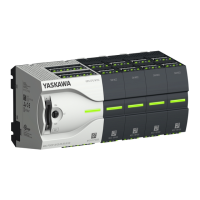The following features characterize the USS protocol:
n Multi point connection
n Master slave access procedure
n Single master system
n Max. 32 participants
n Simple and secure telegram frame
It is essential:
n Y
ou may connect 1 master and max. 31 slaves at the bus
n The single slaves are addressed by the master via an address sign in the telegram.
n The communication happens exclusively in half-duplex operation.
n After a send command, the acknowledgement telegram must be read by a call of the
FC/SFC 218 SER_RCV.
The telegrams for send and receive have the following structure:
Master slave telegram
STX LGE ADR PKE IND PWE STW HSW BCC
02h H L H L H L H L H L
Slave master telegram
STX LGE ADR PKE IND PWE ZSW HIW BCC
02h H L H L H L H L H L
with
STX - Start sign
STW - Control word
LGE - Telegram length
ZSW - State word
ADR - Address
HSW - Main set value
PKE - Parameter ID
HIW - Main effective value
IND - Index
BCC - Block Check Character
PWE - Parameter value
A request can be directed to a certain slave ore be send to all slaves as broadcast mes-
sage. For the identification of a broadcast message you have to set bit 5 to 1 in the ADR
byte. Here the slave addr
. (bit 0 ... 4) is ignored. In opposite to a "normal" send command,
the broadcast does not require a telegram evaluation via FC/SFC 218 SER_RCV. Only
write commands may be sent as broadcast.
Broadcast with set bit 5 in
ADR byte
VIPA System MICRO
Option: PtP communication
Protocols and procedures
HB400 | CPU | M13-CCF0000 | en | 16-47 163

